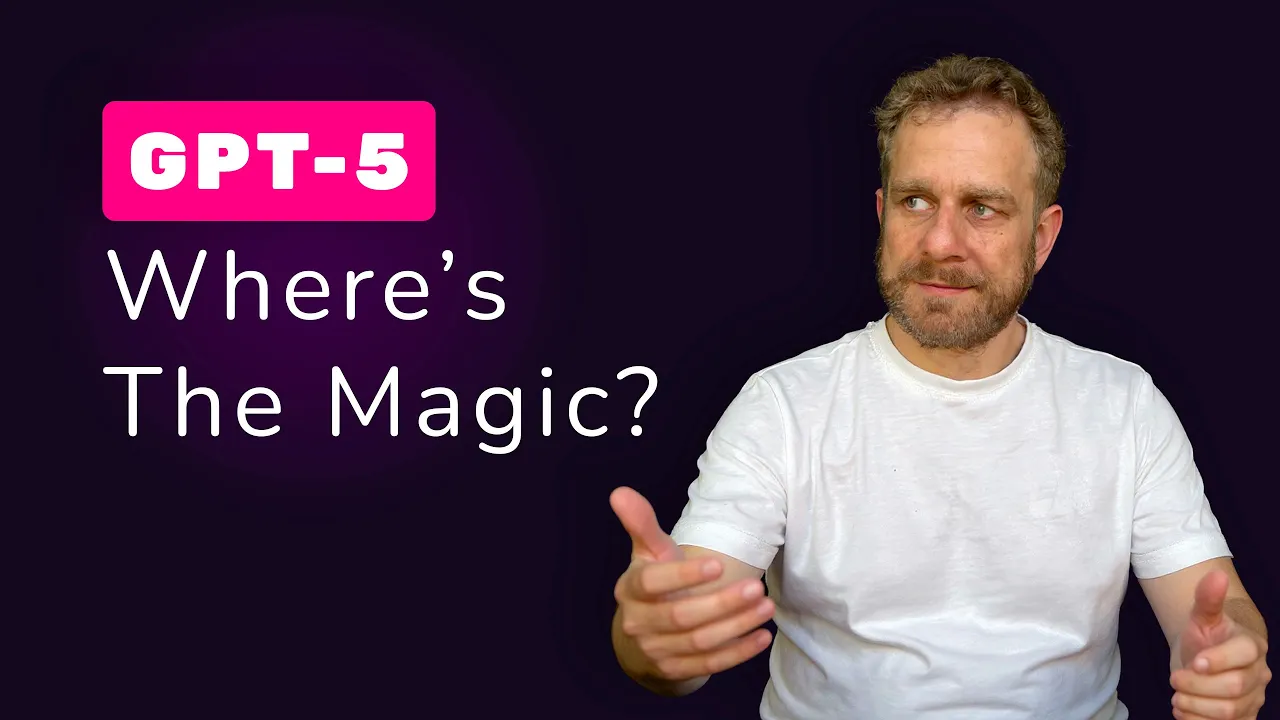
The release of GPT-5 has generated significant buzz in the AI community, with many influencers and tech enthusiasts claiming it represents a revolutionary leap in AI capabilities. But after extensive hands-on testing, it's worth examining whether GPT-5 capabilities truly represent the paradigm shift that much of the hype suggests, or if we're simply seeing another incremental improvement in an already impressive technology landscape.
GPT-5 Capabilities: Good But Not Revolutionary
After several hours of intensive testing, particularly with programming tasks, it's clear that GPT-5 is indeed a competent model. OpenAI knows how to train effective models, and GPT-5 continues their tradition of producing high-quality AI systems. The model performs well across various tasks and demonstrates improvements over its predecessors.

However, when comparing GPT-5 capabilities to other recent models like Claude 4, the revolutionary aspects become less apparent. The improvements seem more iterative than transformative. This pattern of incremental advancement rather than revolutionary breakthroughs appears to be the current reality of large language model development.
The Problem with AI Hype Cycles
One of the most frustrating aspects of new AI model releases is the predictable hype cycle that follows. Each new model is proclaimed as "magical," "AGI-level," or "revolutionary" - often before thorough testing has been conducted. This pattern of excessive enthusiasm creates unrealistic expectations about capabilities of GPT models and AI technology in general.

The issue isn't with the models themselves but with how they're presented. Demonstrations often feature carefully selected examples that highlight strengths while obscuring limitations. The infamous "jumping ball demo" and other similar showcases can create misleading impressions about what these models can consistently achieve in real-world applications.

Comparing GPT-5 to Existing Models
When evaluating GPT-5 against models like Claude 4, Gemini, and even the capabilities of GPT-4, the differences appear more subtle than revolutionary. Each model has its strengths and weaknesses, but they're increasingly comparable in overall utility. This suggests we may be approaching a plateau of sorts in the current architectural approaches to large language models.
- GPT-5 performs well on standard benchmarks, but benchmarks can be optimized for and don't always reflect real-world performance
- Programming capabilities show improvements but not dramatic leaps beyond what Claude 4 or other advanced models offer
- Reasoning abilities follow similar patterns to existing top-tier models
- Multimodal capabilities continue to advance but remain within expected evolutionary improvements
The Value of Incremental Improvements
Despite the critique of excessive hype, it's important to acknowledge that incremental improvements still matter. Each advancement in GPT capabilities brings us closer to more reliable, useful AI systems. These technologies are already transforming productivity and enabling new applications across industries.
The current generation of models - including GPT-5, Claude 4, and various open models - are all remarkably capable. They can be integrated into products to build innovative solutions that weren't possible just a few years ago. The issue isn't the technology itself but the narrative surrounding it.
A More Measured Approach to AI Advancement
As the field matures, a more measured approach to discussing AI advancements would benefit everyone. Rather than proclaiming each new model as revolutionary, we should focus on specific improvements, limitations, and practical applications. This approach would create more realistic expectations and help users better understand how to effectively leverage these technologies.
- Evaluate models based on consistent, real-world tasks rather than cherry-picked demonstrations
- Acknowledge both improvements and limitations transparently
- Focus on practical applications rather than abstract capabilities
- Compare new models fairly against existing alternatives
- Recognize that significant breakthroughs may be less frequent as the technology matures
Conclusion: Appreciating Progress Without the Hype
GPT-5 is undoubtedly a good model with impressive capabilities. It represents another step forward in AI development and will enable valuable applications across numerous domains. However, the gap between its actual capabilities and the revolutionary narrative often presented is substantial.
As AI enthusiasts and professionals, we can appreciate these technological advancements while maintaining a grounded perspective on their limitations and incremental nature. This balanced view allows us to better leverage these powerful tools while setting realistic expectations for what they can achieve.
The future of AI remains bright, with each improvement building upon previous work. But perhaps it's time to move beyond the hype cycle and embrace a more nuanced understanding of progress in machine learning and artificial intelligence - one that celebrates genuine advances without exaggerating their immediate impact.
Let's Watch!
GPT-5 Reality Check: Incremental Improvements vs Revolutionary Hype
Ready to enhance your neural network?
Access our quantum knowledge cores and upgrade your programming abilities.
Initialize Training Sequence